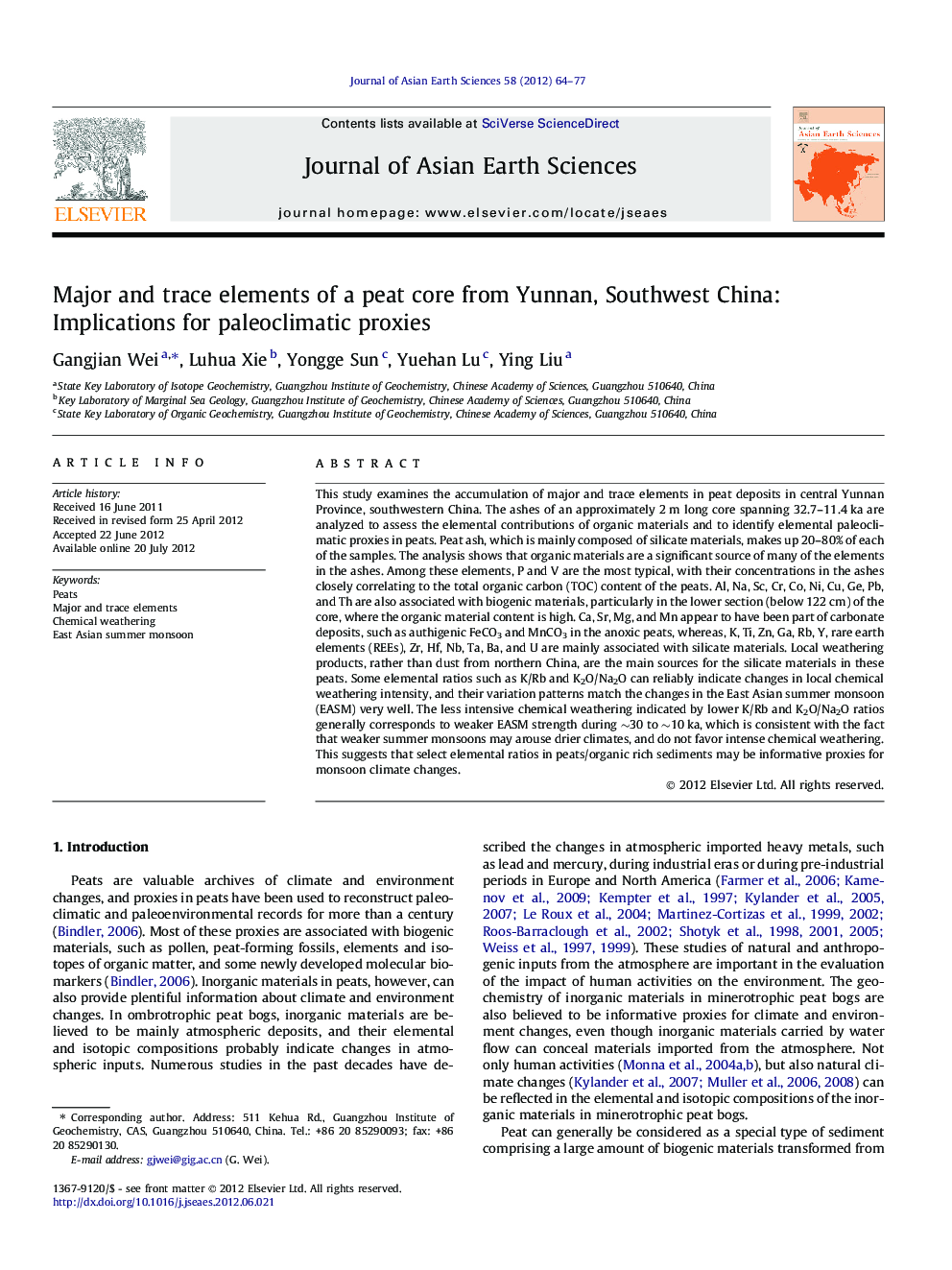| کد مقاله | کد نشریه | سال انتشار | مقاله انگلیسی | نسخه تمام متن |
|---|---|---|---|---|
| 4731470 | 1640407 | 2012 | 14 صفحه PDF | دانلود رایگان |

This study examines the accumulation of major and trace elements in peat deposits in central Yunnan Province, southwestern China. The ashes of an approximately 2 m long core spanning 32.7–11.4 ka are analyzed to assess the elemental contributions of organic materials and to identify elemental paleoclimatic proxies in peats. Peat ash, which is mainly composed of silicate materials, makes up 20–80% of each of the samples. The analysis shows that organic materials are a significant source of many of the elements in the ashes. Among these elements, P and V are the most typical, with their concentrations in the ashes closely correlating to the total organic carbon (TOC) content of the peats. Al, Na, Sc, Cr, Co, Ni, Cu, Ge, Pb, and Th are also associated with biogenic materials, particularly in the lower section (below 122 cm) of the core, where the organic material content is high. Ca, Sr, Mg, and Mn appear to have been part of carbonate deposits, such as authigenic FeCO3 and MnCO3 in the anoxic peats, whereas, K, Ti, Zn, Ga, Rb, Y, rare earth elements (REEs), Zr, Hf, Nb, Ta, Ba, and U are mainly associated with silicate materials. Local weathering products, rather than dust from northern China, are the main sources for the silicate materials in these peats. Some elemental ratios such as K/Rb and K2O/Na2O can reliably indicate changes in local chemical weathering intensity, and their variation patterns match the changes in the East Asian summer monsoon (EASM) very well. The less intensive chemical weathering indicated by lower K/Rb and K2O/Na2O ratios generally corresponds to weaker EASM strength during ∼30 to ∼10 ka, which is consistent with the fact that weaker summer monsoons may arouse drier climates, and do not favor intense chemical weathering. This suggests that select elemental ratios in peats/organic rich sediments may be informative proxies for monsoon climate changes.
► Major and trace elements of the ashes of a peat core from Southwest China were analyzed.
► Quite some elements, in particular P, V and Pb were significantly contributed from organic materials (OM).
► Such OM contributions may bias the paleoclimatic interpretation of related elements.
► K and Rb are free from OM contributions, and K/Rb clearly indicated changes in local chemical weathering.
► The weathering changes appeared to associate with changes in East Asian Summer monsoon.
Journal: Journal of Asian Earth Sciences - Volume 58, 30 September 2012, Pages 64–77